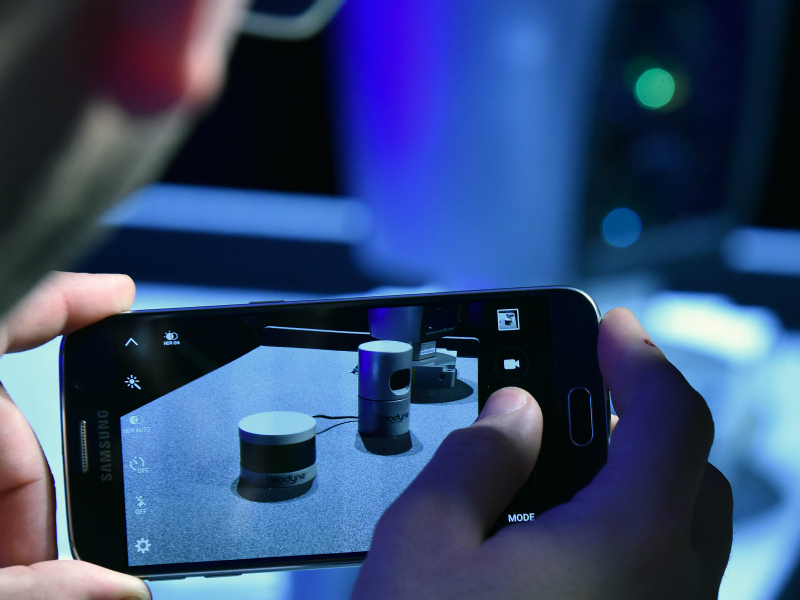Aarti Shah 06 Jan 2016 // 5:17PM GMT

The Holmes Report’s annual Trend Forecast series looks at sector trends that will impact PR. You can find them all here.
Since the advent of the ‘selfie’ there has been a shifts towards putting the ‘self’ — or the consumer — at the center of emerging trends and movements. This will carry forward in 2016 with identity and social values continuing to weigh heavily on consumer purchases and loyalty.
1. Less Is Even More
Katie Couric recently investigated the ‘Tiny House Movement’ that identifies as “a social movement where people are choosing to downsize the space they live in.” But scaling back material belongings, usually in favor of richer experiences, has impact beyond home-building. “The ‘less is more’ trend is accelerating due to declining, historically low rates of homeownership and the corresponding boom of the rental market,” says Grace Leong of the US-based Hunter PR. “More than ever, consumers are looking to add a personal touch to their spaces through accents and accessories that add emotional depth and meaning to their material possessions.” The move towards simplicity is also reflected in food choices. Jean-Michel Dumont, head of Ruder Finn Asia, points to a growing distrust among consumers towards packaged foods, compelling manufacturers to embark on health education campaigns.
2. The Rise of Climatarians
The 2015 UN Climate Change Conference in Paris saw governments from 195 countries — for the first time — agree to cut greenhouse emissions and attempt to keep global warming below two degrees Celsius. Consumers, meanwhile, show support for curbing climate change in their food choices. “They understand that food is communication, so their choices at the tables – often shared in social media – communicate their vision and values,” says MSLGroup’s Steve Bryant. He predicts the rise of “water-conscious diets” or “#uglyfood” — the “misshapen vegetables and bruised fruits, at bargain prices, will widely appear in farmers’ markets and grocery stores.” Across Southeast Asia “people have embraced recycling and having low environmental impacts for food consumption,” Ruder Finn’s Dumont noted.
The artisanal and craft trend will similarly be impacted. “It's not enough to be well-made by real people in the premium category anymore. What is made needs to be made with due respect paid to people and planet,” says James Gordon-MacIntosh of the UK-based Hope & Glory. For instance, adidas’ x Parley shoes, announced in November, is made from recycled ocean waste.
3. Is Fast, Casual, Healthy Too Good To Be True?
Chipotle reset expectations among consumers on the back of its Scarecrow campaign: real food can be safe, convenient and affordable. This came to a screeching halt last year amid the food chain’s contamination crisis. While trust in fast food with integrity dips, consumers are finding their health fix elsewhere. MSLGroup’s Bryant expects booming demand for fermented foods rich in probiotics, meanwhile Rich Goldblatt from the US-based M Booth expects “plant based diets will get even more popular as plant protein takes a bigger bite out of animal protein, most notably in meals, snacks and shakes.”
Meanwhile, look for urban dwellers to either import or grow their own food. “After numerous domestic food crises, Chinese consumers are showing preferences of fresh and imported food,” Ruder Finn’s Dumont says. “Now it is all tied up in access - those living in urban centers are consuming almost twice the amount of fruits and eggs as their rural counterparts.” MSL’s Bryant also points to city roofs becoming “mini agricultural centers, and communities will devise vertical farms, container farms and other creative solutions that escalate the ‘local foods’ movement.”
4. Consumers Seen Through Different Lens
Expect consumers to be sliced in new ways in 2016. We’ve already seen the emergence (and onslaught of analysis) of Gen Z. But there’s more. M Booth’s Jon Paul Buchmeyer expects in 2016 brands that have been focused on the upper middle class LGBT market will expand their outreach to LGBT households with middle income. “They’ll put increasing pressure on brands to support equality issues beyond gay marriage- think workplace equality demands and inclusion of transgender surgery in insurance policies,” Buchmeyer says. A.G. Bevilaqua — also of M Booth — adds brands will put more emphasis outreach for adult consumers that doesn’t revolve around parenthood. She points to pop culture examples “from the coining of the Otherhood by Melanie Notkin, to the ‘non-mom; conference that took place in Cleveland Ohio to icons like John Hamm, Oprah, Ellen and Jay Leno asserting their decision to not have children.”
Preben Carlsen of the Norway-based Trigger maintains digital identity will disrupt demographic segmentation. “Consequently, the traditional demographic segmentation models are put to the test,” he says. In England, he notes, the elderly are the fastest growing segment on social media and women 40+ are the fastest growing group of video gamers. “Therefore, companies and agencies around the world need to improve their skills on how they can look beyond demographics segments and use their energy to understand what drives their audience instead.”
5. Automotive Stalwarts Become Transportation Companies
At CES 2016, automakers responded to consumer demand that cars essentially become “rolling smartphones” according to NPR’s coverage that also noted that a recent study shows that technology features, like WiFi and backup cameras, are now the deciding factor in new car purchases. At the show, Ford CEO Mark Fields announced planned investments in areas like ride-sharing, pay-by-mile rental cars, a driverless fleet that would turn the American automaker into into a “transportation services” company. Meanwhile, General Motors is pouring $500m into Uber competitor Lyft with plans to build an autonomous fleet and Toyota has allocated $1bn towards artificial intelligence and robotics.
Photo courtesy of Ford


































.jpg)




.tmb-135x100.jpg)












